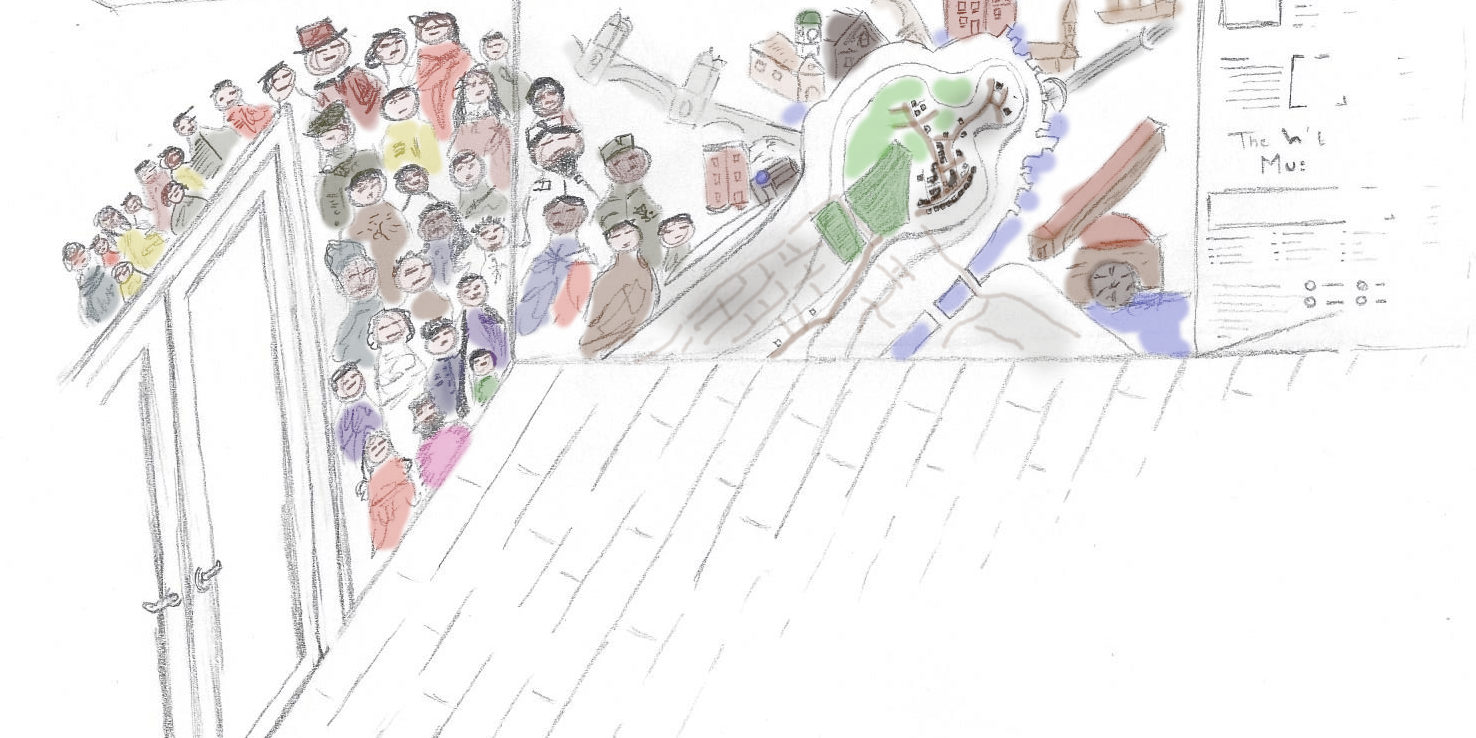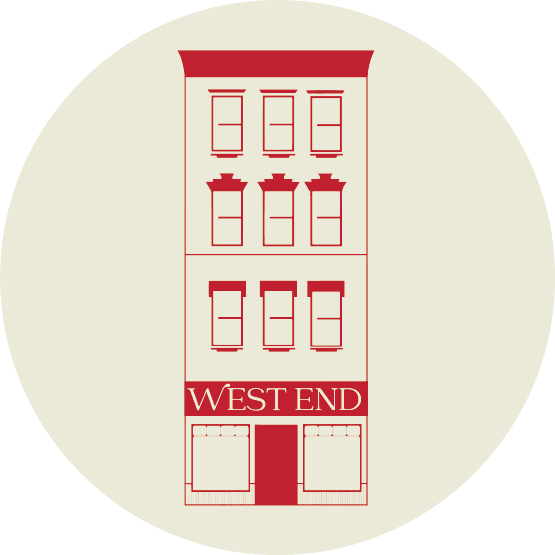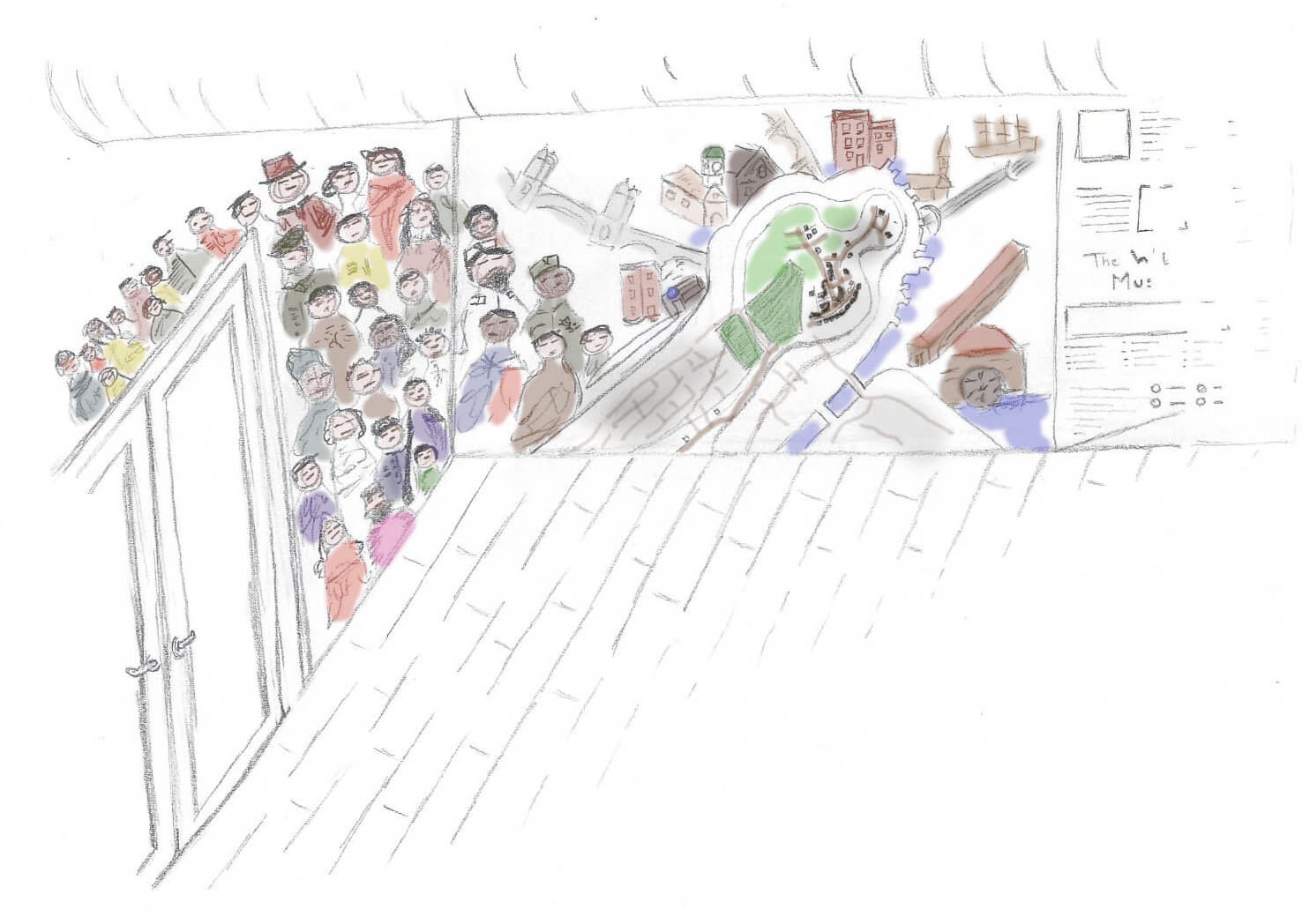Renovations are Just Part of the Changes at The West End Museum
An Effort to Create a Better Experience for Visitors and an Enhanced Examination of this Vital Neighborhood
As the West End community continues to grow and evolve over the coming decades, the museum dedicated to telling its story is also undergoing an evolution. Now into its second decade as Boston’s only neighborhood museum, The West End Museum (WEM) has begun a substantial renovation project aimed at updating the facility, layout and exhibits to better share the story of the West End with new generations—from current neighborhood residents, to tourists, to the children and grandchildren of displaced West Enders. If you want to see the beginning of that change you don’t have to look far, the Museum has a new logo.
According to WEM Director Sebastian Belfanti, a new floor and other physical improvements have already been completed. The museum is working with Chan Ascher Architecture, which is generously donating their time to plan the Museum’s structural improvements. Outside the Museum, a new sidewalk has been installed as the Alcott building, rising at the site of the old West End garage, nears completion.
Museum renovations are expected to continue on and off for the next 18-24 months, Belfanti said. “We are moving ahead with renovations as we secure funding and are committed to keeping the museum open throughout the process.”
The renovation comes as one of Boston’s original neighborhoods continues to attract new residents and businesses. The West End has always been a vibrant piece of Boston’s landscape, one the WEM is proud to showcase. With updated branding, improvements to its physical space, growing social media presence and membership, the WEM is ready for another decade telling the story of the West End from its founding Black community, through its development as an immigrant neighborhood, to the 1960s urban renewal, to the present day.
Building into a New Decade
Since opening in 2010, the WEM has collected and organized a vast collection of letters and other artifacts. Looking ahead, the Museum wants to make this collection available for viewing, while showcasing special pieces and enhancing how it tells the story of the people, places, and culture of the West End. The coming renovations will make that possible.
The WEM occupies a 3,000-square-foot, ground-floor space in West End Place, a residential building at 150 Staniford St., which was originally proposed by the Museum’s founders. Perhaps the most obvious change coming to The West End Museum will be its entrance. The front door is moving 50 feet closer to Causeway Street. Belfanti says the change will create a better flow for visitors through the space, allow the Museum to continue operating during private events and create more useful space to support the Museum’s wide range of programs.
The WEM’s signature exhibit, The Last Tenement, which was the generous gift of the Bostonian Society (now part of Revolutionary Spaces) to a then fledgling institution, will move into a fully renovated main gallery. Re-written and re-designed, the exhibit will explore some new themes while retaining its thorough exploration of the neighborhood’s immigrant story.
The museum’s new configuration will include space for groups not represented in the original design. The early Black residents who founded the neighborhood, will step into a much more prominent role, along with many immigrant groups ― primarily Irish, Italians, and Eastern European Jews ― who are currently represented. Many of the less populous ethnic groups, whose immigration into the neighborhood helped make the West End such a vibrant melting pot, will also be featured in the new exhibit.
Belfanti said the Museum will also introduce some entirely new elements, including a mural featuring a combination of landmarks and individuals who contributed to the rich history of the West End. And, to accommodate the growing collection of West End stories, beyond what is included in the permanent exhibit, the Museum will utilize small and regularly shifting panels that will spotlight notable names and faces.
Visitors Immersed in West End Life
A new Immersion Room will be home to a changing exhibit that models historic slices of West End life. Visitors will be literally immersed in the life of West End inhabitants, such as the living room of a West End apartment or the iconic storefront of Joe and Nemo’s – once the world’s best-known hot dog stand. “The goal is to create an immersive experience that brings people to the West End and the West End to people, in ways they will remember,” Belfanti said.
Programs and Exhibits will Continue
The WEM will continue offering lectures, readings and performances in the newly renovated space. Belfanti says the museum should be even more appealing to outside groups that rent the space for private events.
“The Museum is moving into a new era,” Belfanti said. “We are going to build a fully updated space that holds onto the essence of our past, adapts to the new technologies available, and better serves people coming to discover the incredible story of Boston’s most dynamic neighborhood.”




